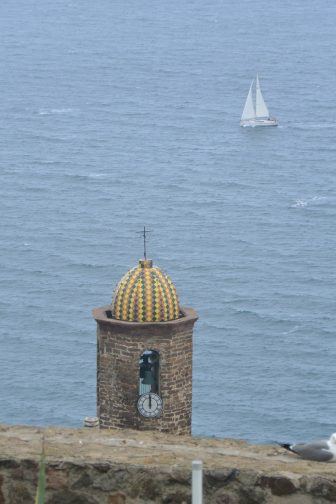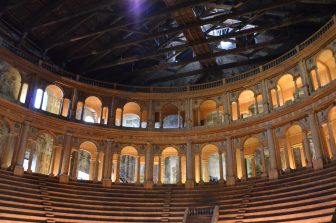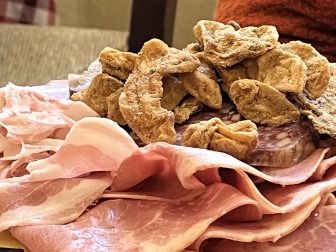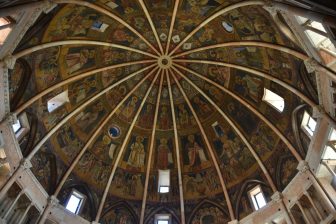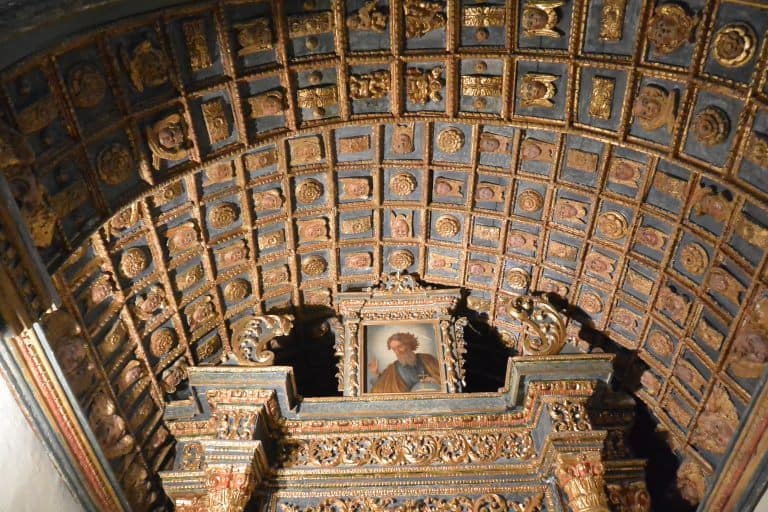
[ May 2018 ] After seeing the basket museum in the ruin of the castle in Castelsardo, a town in the north of Sardinia in Italy, we walked down the opposite slope from the way we came up.
The first thing we found was a small stone church called Chiesa di Santa Maria.
The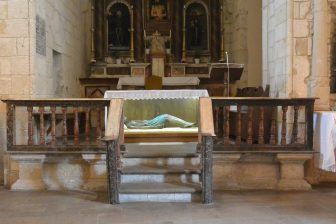
According to our guidebook, the main part of the church was built in the 16th century.
And there is a statue called Critu Nieddu (Black Christ), made in the 13th century, which is famous here.
I thought it was the one in front of the altar in the glass coffin, which was sort of black, but in fact there was another one of the crucifix, which I missed.
After this church, we found the Cattedrale di Sant’Antonio Abate.
The roof of the bell tower is nice and colourful and noticeable.
At the entrance, they told us that we could hire a guide for €4, so we did.
A woman took us around.
This cathedral was built between the 14th and the 17th centuries and each chapel has a different style depending on when it was built.
The 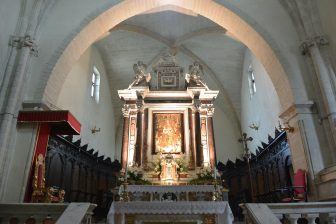
Apparently they know that there are 6 paintings by him and one of them is in Birmingham in England.
This church seems to have been used as a graveyard at one point as they have found many human bones in the basement.
They think they were the people 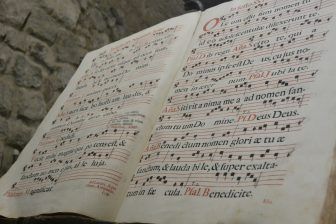
Now the basement is a museum.
We saw a treasure case with bones of 33 saints; a cross containing a piece of wood which is supposed to be a part of the cross Christ was crucified on (she said that it was certified by a Pope); musical scores of Gregorian chant with 4 lines instead of 5 lines and so on.
Going up the narrow stairs, we found a small room.
It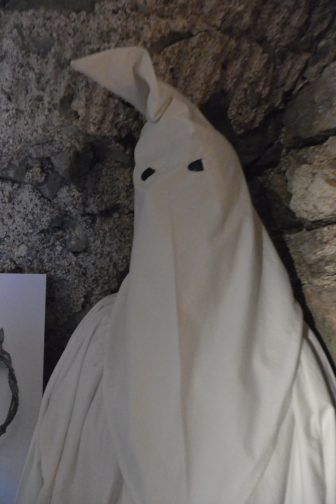
They walk around the town carrying a statue of the Virgin Mary.
When they walk, they wear a white costume with the pointed hood and two holes for eyes like the ones of the Ku Klux Klan (KKK) in the USA.
We learned last year in Chieti in Abruzzo that they wear the same kind of costumes for their procession, too, so this kind of costume seems quite common, though the image of the KKK is so powerful that it still often leaves a bad taste.
There was a video of this procession in the room, so we watched it for a while.
The beautiful harmony of the male chorus who were singing unaccompanied was impressive.
After that, we went back to the square which was our meeting place with our taxi driver.
This cathedral is on the seaside, so first we needed to go up the hill to the ruin of the castle and went down.
Because the streets were like a maze, we had to ask many people for directions.
To be honest, I wanted to walk around this maze more, but we could see our taxi from the hill already waiting for us, so we rushed down to the square and left Castelsardo.

